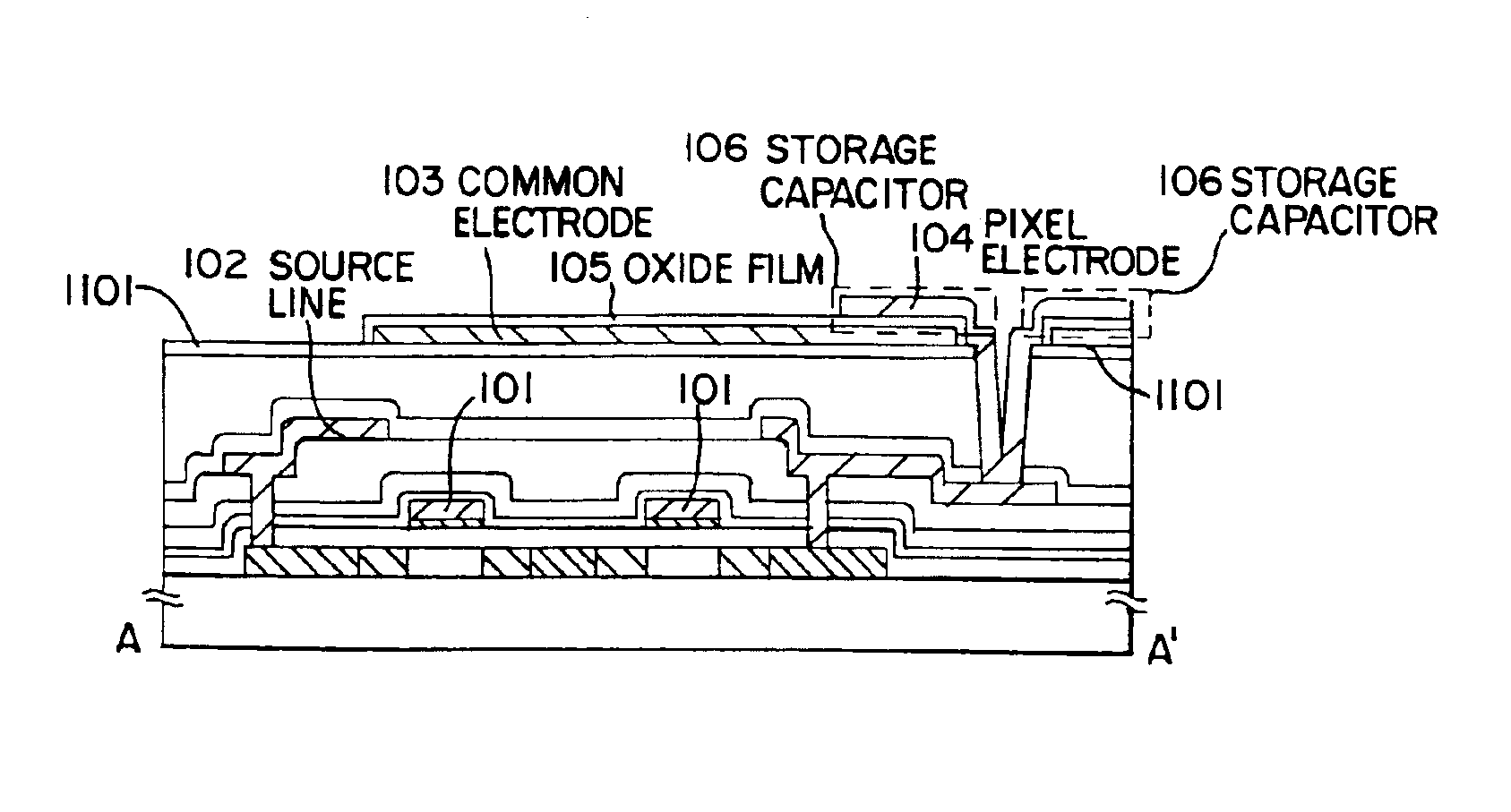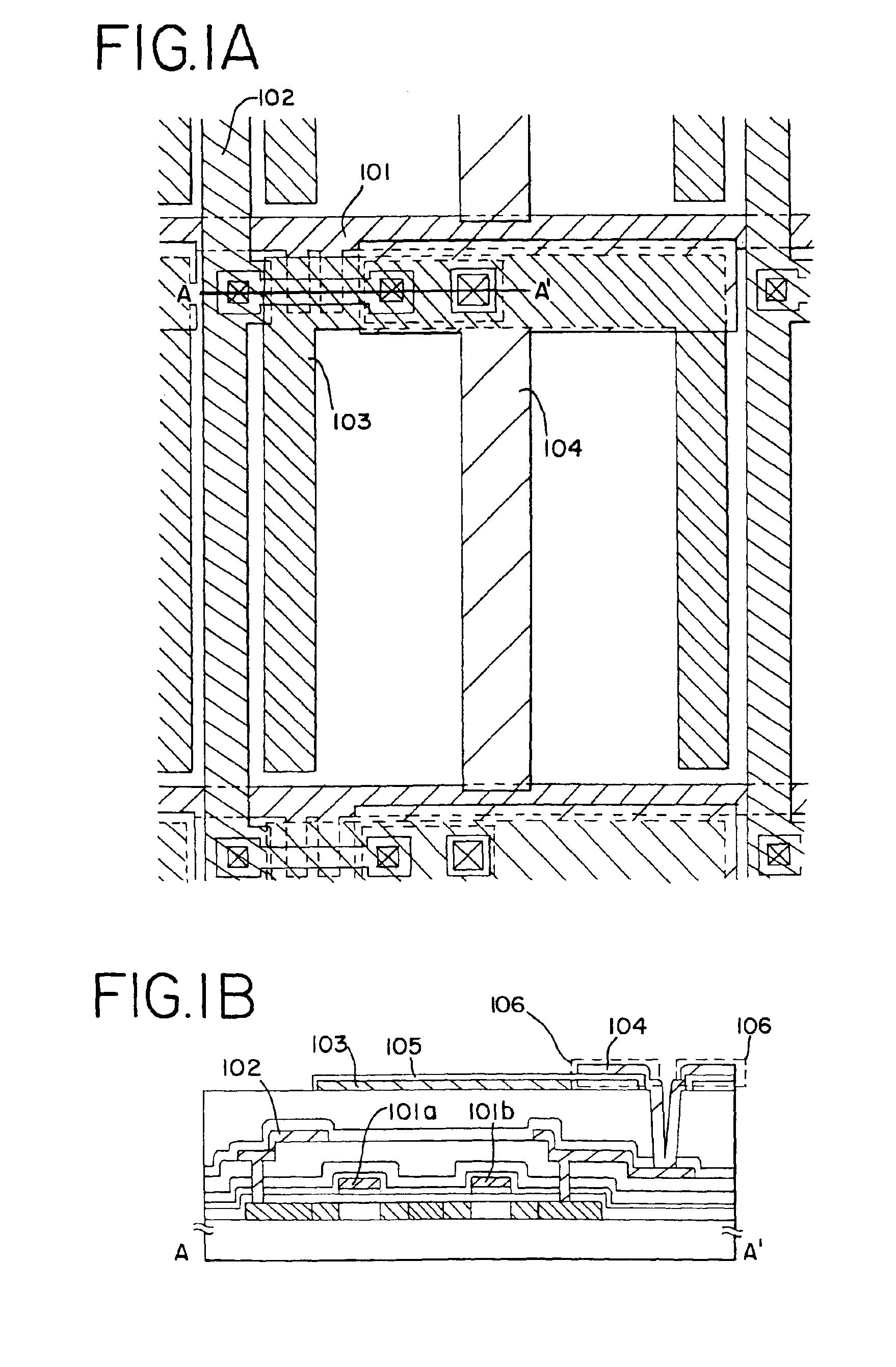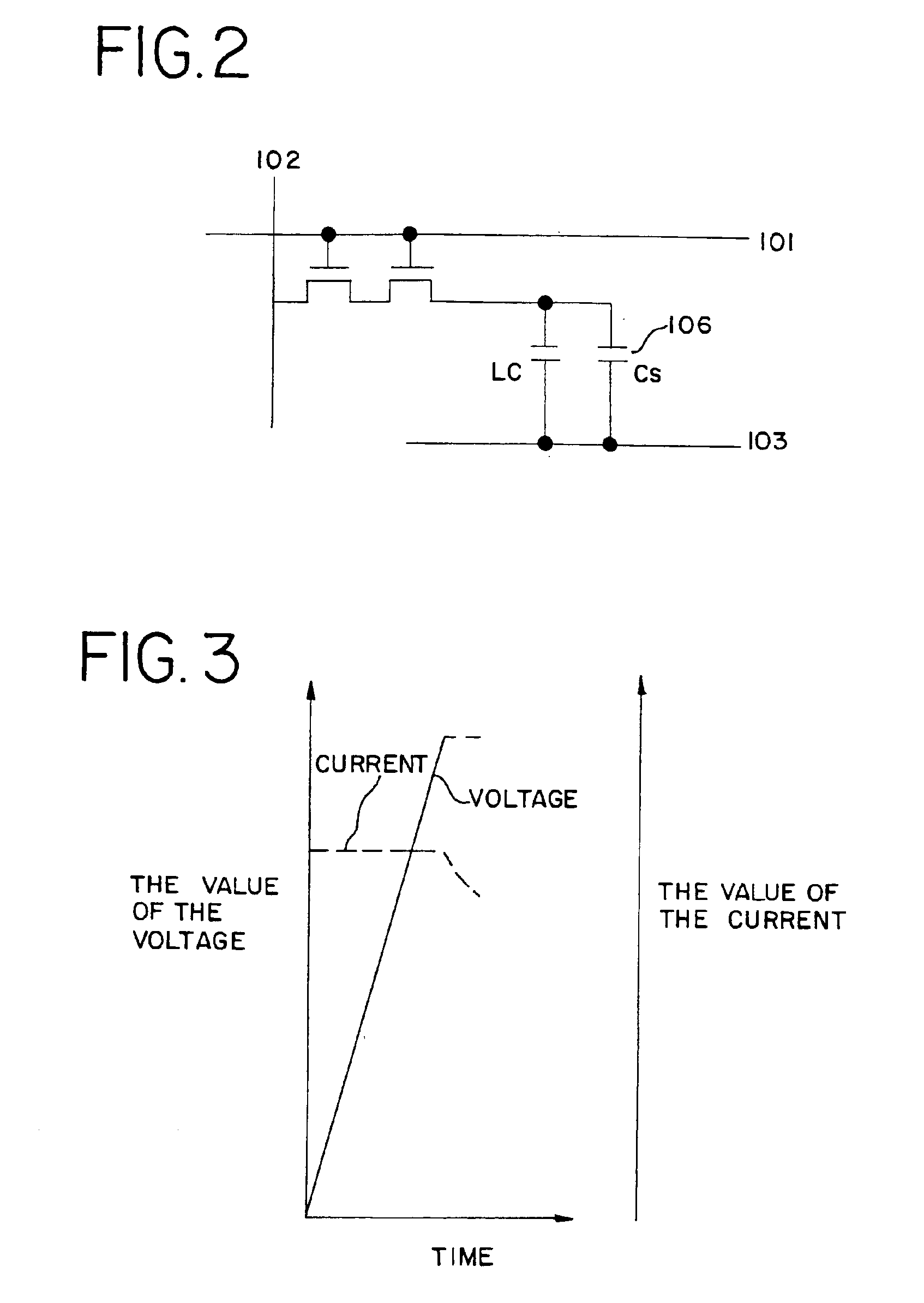Semiconductor device with capacitor formed around contact hole
a technology of capacitors and semiconductors, applied in the field of semiconductor devices, can solve the problems of reducing the aperture ratio of the ips liquid crystal display device and difficult to ensure a sufficient storage capacitance, and achieve the effect of high aperture ratio
- Summary
- Abstract
- Description
- Claims
- Application Information
AI Technical Summary
Benefits of technology
Problems solved by technology
Method used
Image
Examples
embodiment 1
[Embodiment 1]
[0088]Embodiment 1 of the present invention is explained by using FIGS. 4A to 8. A method of manufacturing a pixel portion and a driver circuit in order to drive the pixel portion at the same time, and on the same substrate, is explained. Note that in order to simplify the explanation, a CMOS circuit, a basic circuit for circuits such as a shift register circuit and a buffer circuit, and an n-channel TFT which forms a sampling circuit, are shown in the figures.
[0089]It is preferable to use a quartz substrate or a silicon substrate as a substrate 401 in FIG. 4A. A quartz substrate is used in embodiment 1. In addition, a substrate such as a metallic substrate or a stainless steel substrate on which an insulating film is formed on the surface may also be used. In embodiment 1, a heat resistance capable of withstanding 800° C. or greater is required, and provided that it can fulfill this condition, any substrate may be used.
[0090]A semiconductor film 402 containing an amor...
embodiment 2
[Embodiment 2]
[0189]FIGS. 11A to 11C are used in embodiment 2 to explain a case of a pixel portion structure which differs from that of embodiment 1. Note that the basic structure is the same structure as that shown in FIG. 1B, and therefore only points of difference are explained. Consequently, the same symbols are used for identical portions.
[0190]FIG. 11A is a cross sectional diagram of the pixel portion of embodiment 2, and is an example of forming a buffer layer 1101 between an interlayer insulating film (organic resin film) and the common electrode 103. An insulating film containing silicon with a thickness of between 10 and 100 nm (preferably between 30 and 50 nm) is used as the buffer layer 1101. However, in forming the buffer layer on the organic resin film, there is a problem of degasification from within the resin film if it is exposed to a vacuum, and therefore it is preferable to use an insulating film which can be formed by sputtering.
embodiment 3
[Embodiment 3]
[0198]In embodiment 3, a case of the shape of the common electrode of the pixel portion differing from that of embodiment 1 is explained using FIG. 12 and FIG. 13. Note that the basic structure is the same structure as that shown in FIG. 1A, and therefore only points of difference are explained. Consequently, the same symbols are used for identical portions.
[0199]In order to set the common electrode to a common electric potential (an intermediate electric potential of the image signal sent as data) in embodiment 3, a common electrode 1201 with a shape connected to each of the common electrodes is formed. By then electrically connecting an electric power supply line for imparting a common electric potential to the common electrode 1201, outside of the pixel portion, the common electrode 1201 can be maintained at the common electric potential. Note that when the common electrode 1201 is used, the step of cutting apart after anodic oxidation can be omitted, and therefore ...
PUM
| Property | Measurement | Unit |
|---|---|---|
| current density | aaaaa | aaaaa |
| current density | aaaaa | aaaaa |
| current density | aaaaa | aaaaa |
Abstract
Description
Claims
Application Information
 Login to View More
Login to View More - R&D
- Intellectual Property
- Life Sciences
- Materials
- Tech Scout
- Unparalleled Data Quality
- Higher Quality Content
- 60% Fewer Hallucinations
Browse by: Latest US Patents, China's latest patents, Technical Efficacy Thesaurus, Application Domain, Technology Topic, Popular Technical Reports.
© 2025 PatSnap. All rights reserved.Legal|Privacy policy|Modern Slavery Act Transparency Statement|Sitemap|About US| Contact US: help@patsnap.com



